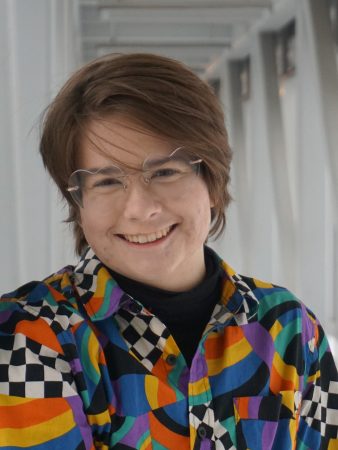
Deaf History Month, observed March 13 to April 15, is a celebration of the accomplishments of D/deaf* and hard-of-hearing individuals and Deaf culture. The month begins on March 13 with the anniversary of the founding of America’s first Deaf college, Gallaudet University. April 15 closes the month by honoring Gaulldet’s first Deaf president, King Jordan.
Note: D(d)eaf/ Hard-of-Hearing notation distinguishes between cultural Deafness and different levels of hearing loss. The use of uppercase D represents individuals involved with Deaf culture, while lowercase refers to hearing loss itself.
This month is also a month of advocacy. While the advent of the Americans with Disabilities Act of 1990 provided many protections for individuals, many face discrimination and othering in society and culture. For instance, Deaf individuals are less likely to be employed, even with these laws. Much progress still needs to occur to ensure equity.
Deaf Culture—varied and expressive
Similarly, this heritage month also acknowledges the importance and complexity of Deaf culture. Deaf culture is significant in its expressions of communication and shared beliefs. This heritage stems from a history of discrimination and disenfranchisement in society, much like among other marginalized identities. Deaf culture refers to the linguistics, values, and identity that all Deaf individuals experience.
One key aspect of Deaf Culture is its celebration of language. Signed languages are visually expressive due to their need for emphasis and context. Many deaf individuals do not consider themselves disabled because nothing is fundamentally missing from their communication. Deafness is not always experienced as a loss to those in the community, rather, there is a greater focus on the positive additions that signed languages bring to those who use them. Indeed, these shared languages create a strong and insulated community.

About the Author
Riley Powers
Interest Areas
- Scientific and Technical Communication, third year
- Accessibility
- Studying the connections of public transit infrastructure and accessible and inclusive design
- Making mixed media accessible for the largest audience possible
A complex and varied culture is hard to describe in broad strokes, as it should be, since no culture is a monolith. For instance, dozens of separate signed languages exist, each with their own grammar, structure and style. Handspeak, which indigenous groups in the southwestern US traditionally use, is very different from American Sign Language (ASL). Much like other dialects, hundreds of regional slang signs and notations exist even within ASL. For instance, West Coast ASL and Midwest ASL are incredibly different in execution.
ASL also encapsulates a wide range of idioms, puns and jokes that are unique to the culture they serve. To give an example, my favorite ASL idiom remains “you’ve missed the joke/story,” which is expressed by the signs “TRAIN-GONE-SORRY.” This year’s sign for “2022” makes for an especially good pun, as it roughly looks like “BIRD go PEACE PEACE” and has been a popular ASL meme. Like spoken languages, signed communication also contains subcultures. One of its biggest subcultures is Black American Sign Language, which has hundreds of unique jokes, signs and values.
Deafness is not binary
A common misconception held by many hearing individuals is that deafness is binary—a person either hears everything or nothing at all. However, deafness is on a spectrum, and no two deaf individuals will have the same level of hearing. This spectrum operates not only in the level of volume but in frequency and other factors.
Additionally, not all deaf people know signed languages. While some individuals wear hearing aids or controversial cochlear implants, others choose not to. Some individuals lip-read (it’s not like reading a book) and some don’t. This personal choice takes time to develop and is heavily dependent on individual experiences. Never assume an individual’s choices or reasoning behind how they choose to communicate.
Deaf allyship and inclusivity
Interested in learning how to become a better ally? Check out the short list of tips and resources below and follow the Center for Diversity and Inclusion on social media for updates and additional information.
Additionally, consider taking an ASL class from a Deaf individual, making sure to study Deaf culture as you learn. Many individuals in the community believe that learning ASL without its culture fundamentally does a disservice to both the individual and the Deaf community.
Tips and resources
- Here’s a good document that I like about allyship: Guiding Principles for Hearing Allyship
- Provide captions, transcriptions, or interpretations for media you create
- Support D(d)eaf creators
- Protecting and Interpreting Deaf Culture, Glenna Cooper, TEDxTulsaCC
- Deaf ideology, Marika Kovacs-Houlihan, TEDxUWMilwaukee
Image attribution: “Putting on hearing aid” by Disabled And Here, used under CC BY 4.0, cropped from original.